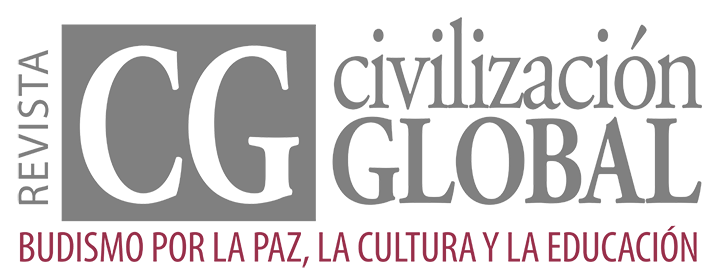Resources for the introduction of SGI-Spain’s discussion meetings
[O]ur head corresponds to myo, our throat to ho, our chest to ren, our stomach to ge, and our legs to kyo. (…) It was for the purpose of preaching this great affair that the Buddha made his appearance in the world. When he revealed that our own bodies are the embodiments of the five characters of Myoho-renge-kyo, he was [as chapter two of the Lotus Sutra says] “opening the door of Buddha wisdom,” revealing that we can attain Buddhahood in our present bodies or existences.
.
“Opening” here is another name for the mind of faith. When we recite Myoho-renge-kyo with the mind of faith, we are in that very act opening the door of Buddha wisdom.
↳ OTT, pages 28-29. The Record of the Orally Transmitted Teachings is a collection of Nichiren Daishonin’s oral teachings about The Lotus Sutra that he expounded during his years at mount Minobu, where he established himself in May of 1274 until the 8th September 1282, a few weeks before he died. These teachings were recorded and compiled in two volumes by his disciple and successor Nikko Shonin.
In terms of our Buddhist practice, the Daishonin explains that “opening” in the phrase “opening the door of Buddha wisdom” is “another name for the mind of faith” (OTT, 28). The most crucial point in attaining Buddhahood in our present form, he says, is whether we genuinely believe that our lives embody Myoho-renge-kyo.
.
“Opening the door of Buddha wisdom” epitomizes the Lotus Sutra’s role as a scripture of universal enlightenment. It reveals the great principle of respect for the dignity of life, that all people are supremely noble and can tap and reveal their limitless inner potential. “Opening” means that the Buddha wisdom already exists within us; if it didn’t, we could not access it.
.
Immediately after this, the Daishonin states: “With regard to the word ‘Buddha’ in the phrase ‘opening the door of Buddha wisdom,’ this refers to the Buddha world that is inherent in the nine worlds.”
.
Opening the door of Buddha wisdom latent in people’s lives is what it means to be a Buddha, an Awakened One.
.
How can we open the door of this Buddha wisdom in our lives? The Daishonin says the key is to “recite Myoho-renge-kyo with the mind of faith” (OTT, 28)—in other words, to chant Nam-myoho-renge-kyo with the conviction that each of us is a supremely noble embodiment of the Mystic Law. That, he explains, is how we attain Buddhahood in our present form.
.
Faith is what enables us to attain Buddhahood, the highest state of life, and tap its inexhaustible wisdom. (…) [T]he stronger our faith, the more we can bring forth the indomitable, ever-victorious power to achieve the impossible.[1]
In the lecture from which the passage from The Record of the Orally Transmitted Teachings and the previous commentary have been taken from, Daisaku Ikeda also explains the following:
February is the month of Josei Toda’s birth. My mentor’s stern yet loving words reverberate in my heart.
.
On one occasion, speaking with great passion, he stressed to us that it is especially important in our youth to trust our heart and believe in ourselves. He asserted that the stronger our faith, the more invincible we will be in any situation, urging us to forge such inner conviction based on the Gohonzon.
.
We believe in our Buddha nature. We believe in our lives that are one with the Mystic Law. As long as we have faith based on the Gohonzon, we will triumph over whatever hardships we may presently face. Mr. Toda urged us to make the Gohonzon the core of our convictions and unite in the spirit of “many in body, one in mind” to create a new age.[2]

There is a saying that states that it takes a village –or a tribe– to foster a human being. Apart from the differences that there may be with other contexts where it may be considered appropriate, this statement shows the importance of mutual support in faith which is a characteristic of Soka Gakkai’s discussion groups, like this one that celebrated the joining as a member of a courageous youth in November (more details in «Mi historia»).
Mailbox: prensa@ediciones-civilizacionglobal.com
[1] ↑ See the section “Estudio” in this issue.
[2] ↑ Ib.

